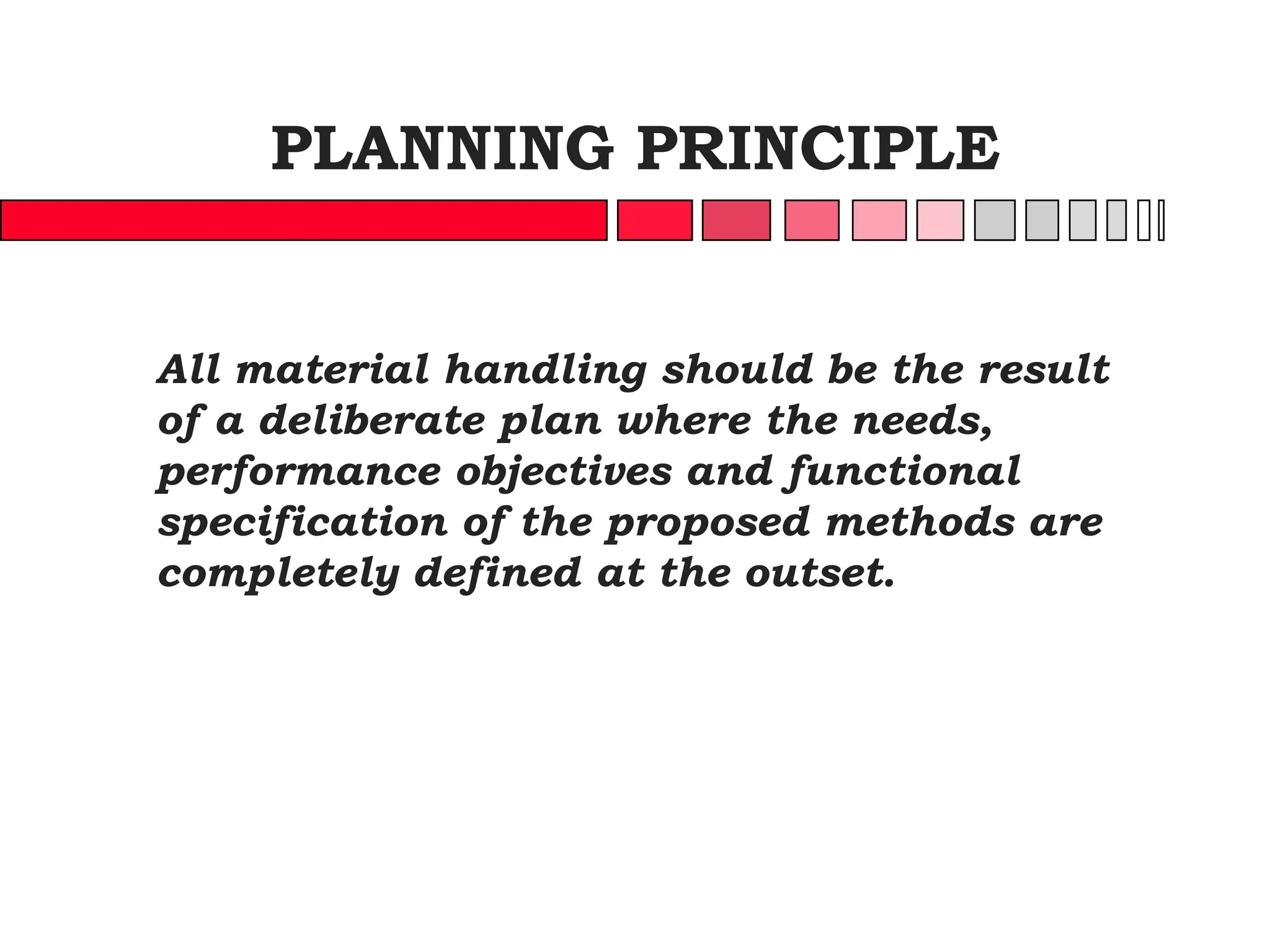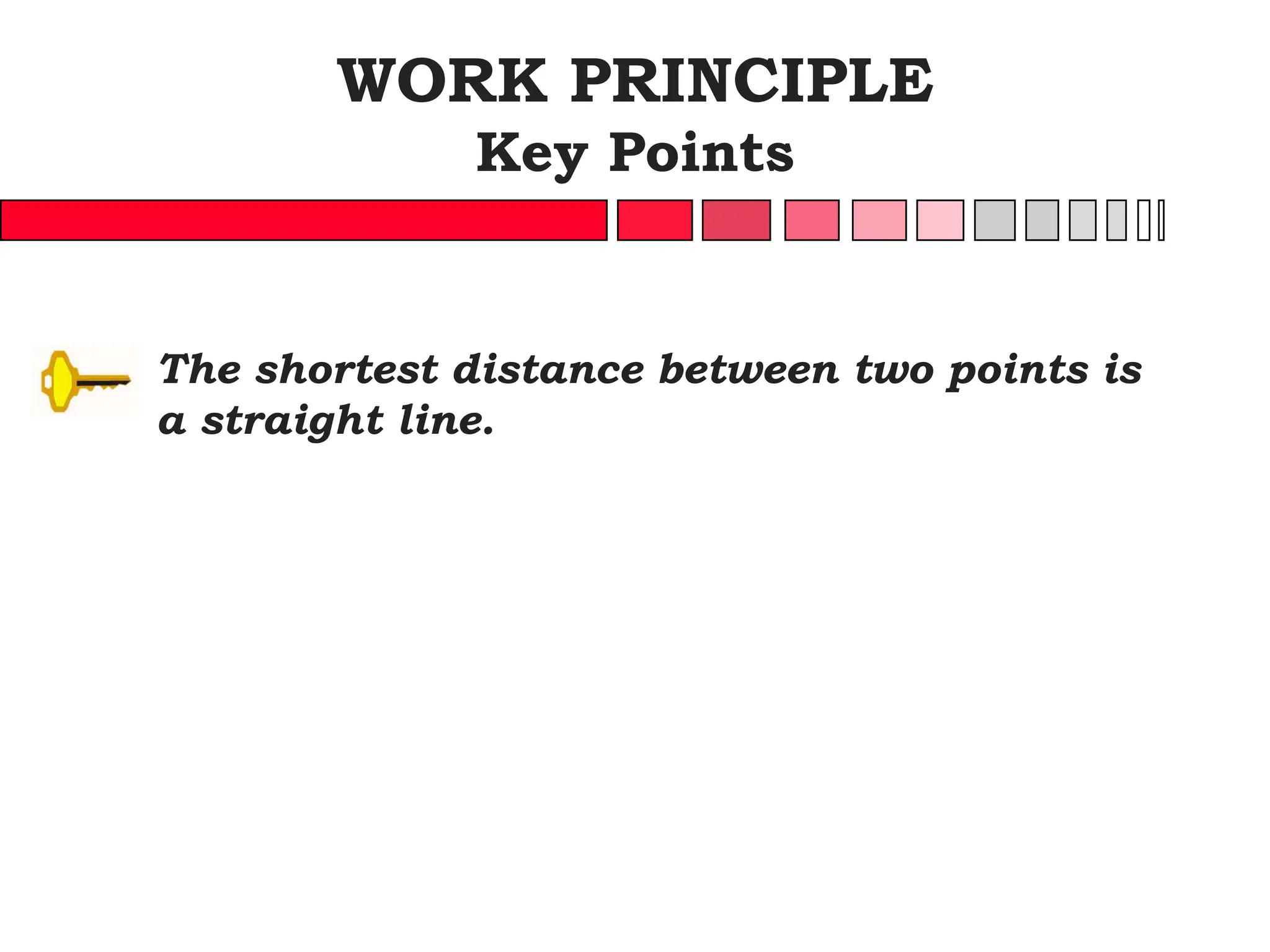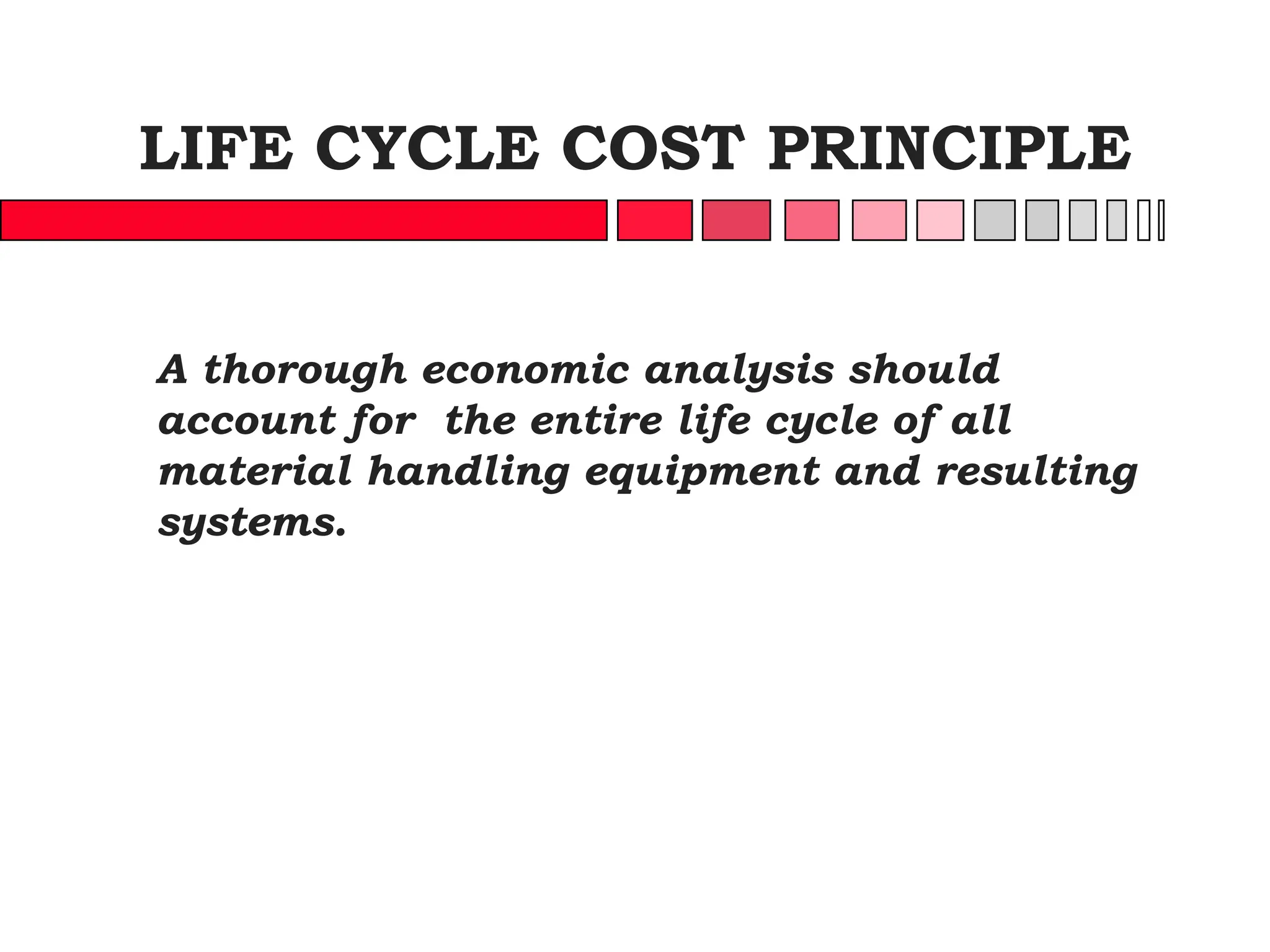The document outlines 10 principles for effective material handling systems and operations. The principles cover planning, standardization, minimizing work, ergonomics, unit loads, space utilization, treating the overall system as integrated, automation, environmental impact, and life cycle cost analysis. For each principle, a definition is provided along with 2-3 key points on how to apply that principle for optimal material handling.










































